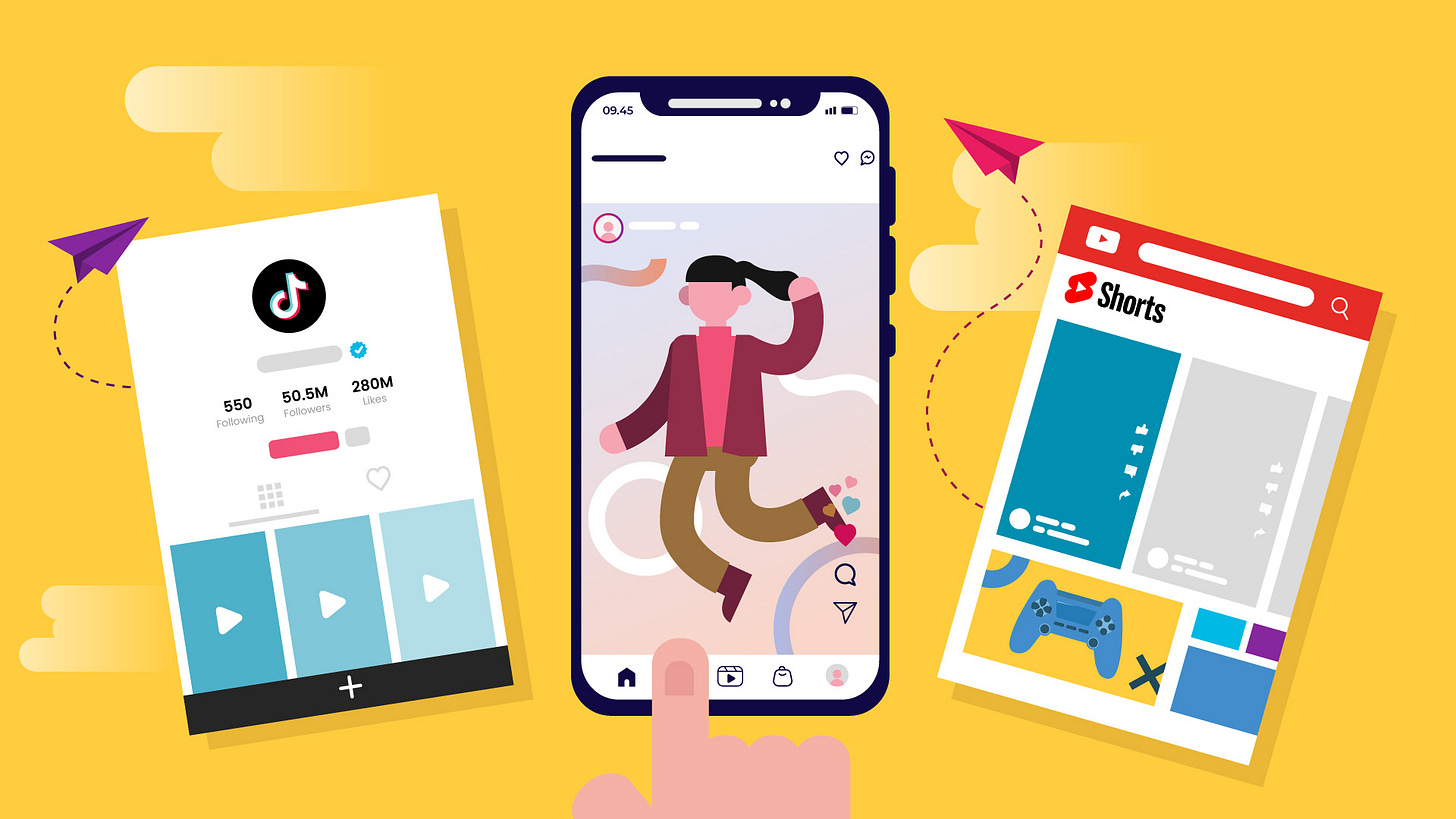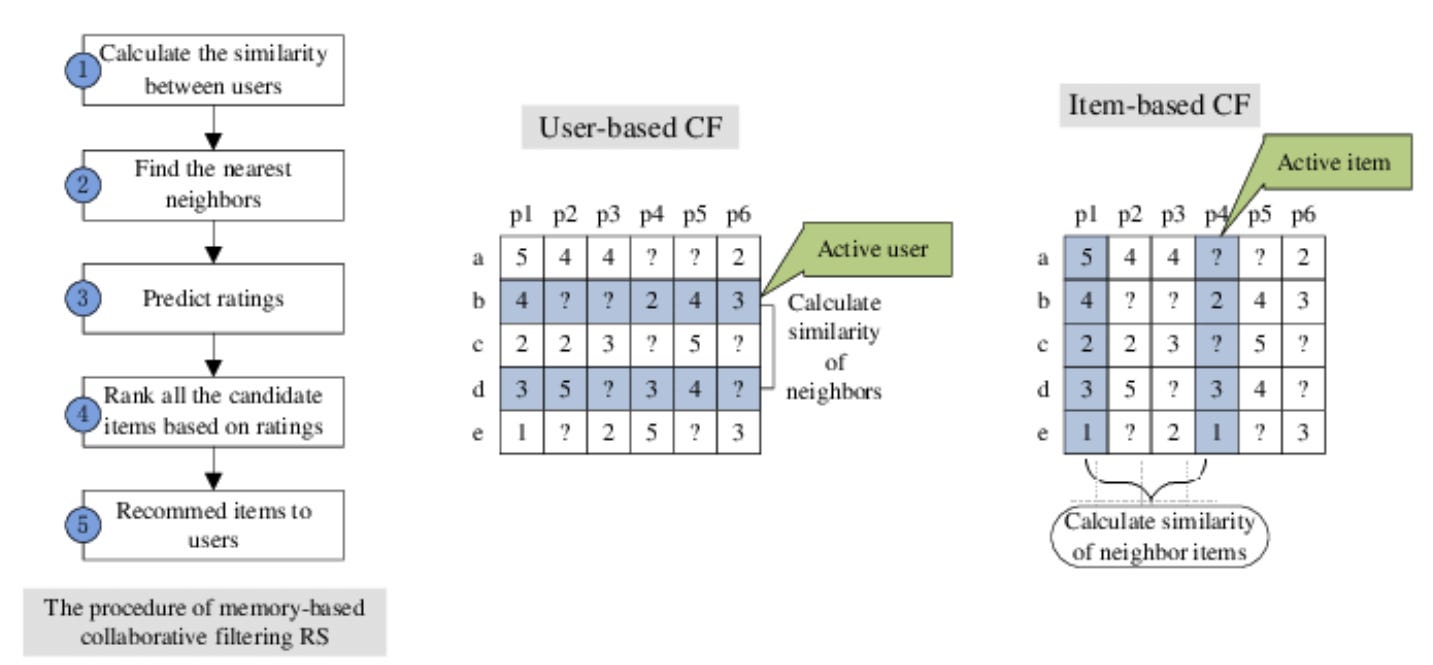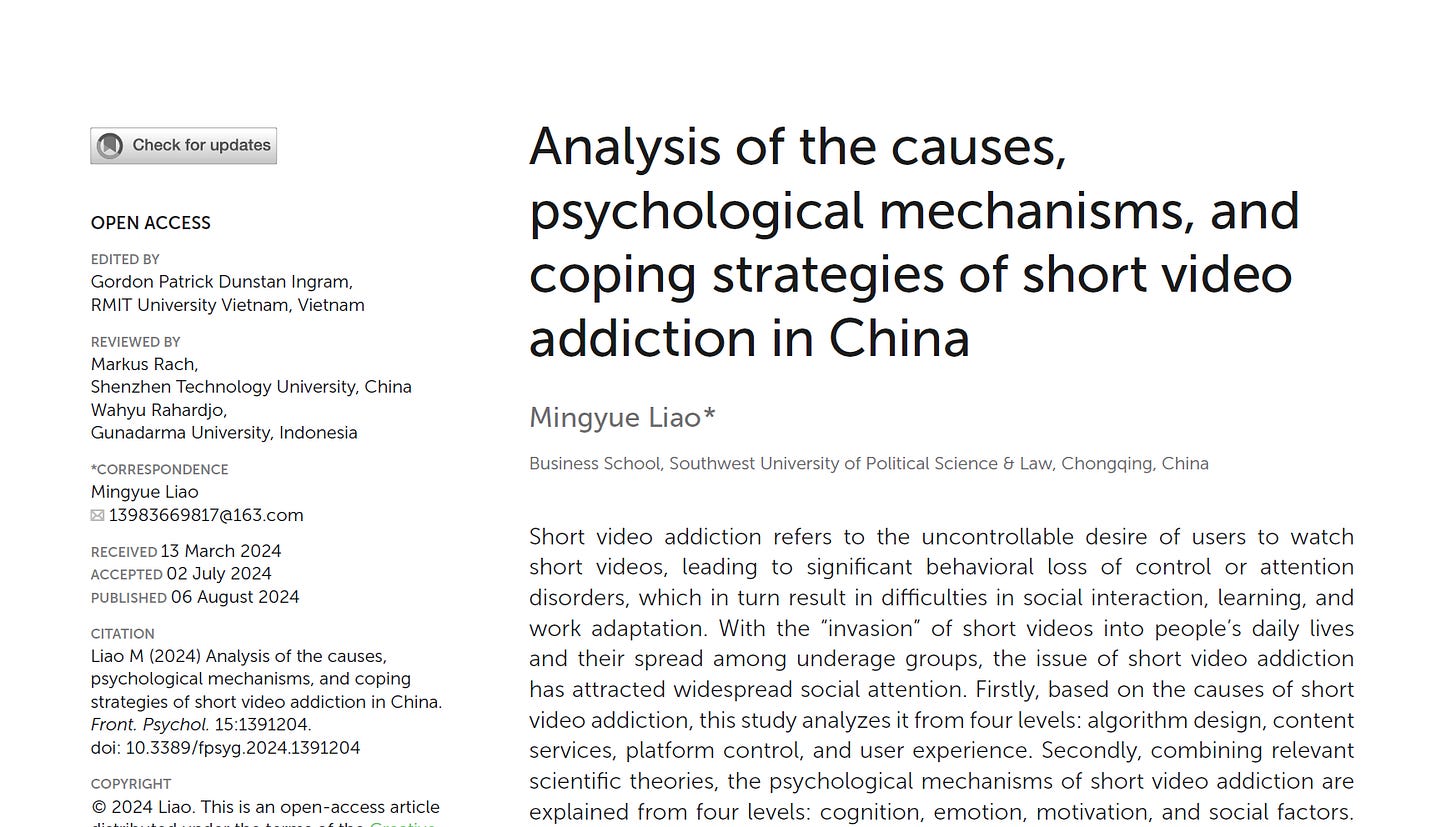The "5-Minute more trap"
Inside short-format video platform's behavioral engineering masterpiece...
Let’s be honest—how many of us have started our mornings with a “quick” Instagram Reel? Just five minutes, right? Fast forward 35 minutes, and you’re still there—scrolling through 7 motivational reels, 2 Andrew Huberman clips explaining how dopamine is hijacked, and that random Virat Kohli dismissal you’ve already seen 10 times.
Somehow, we still find ourselves craving for 5 extra minutes. It’s not that we don’t know what’s happening. We know we’re wasting time. But we’re also really, really good at convincing ourselves that “this time it’s different.” Spoiler alert: it’s not. So why can’t we stop? Is it just weak willpower, or is there something deeper at play? Let’s unpack the science behind short-format video addiction
The Algorithm Knows You Better Than You Know Yourself
Think of Instagram's Reels algorithm as that friend who knows your taste better than you do. It's not just throwing random content at you; it's tracking every single move you make while on the app. Every time you linger on the gym transformation video, double tap on that heartbreak reel or replay Nadal’s topspin forehand, you are essentially telling Instagram, “Hey, more of this, please!”. After understanding user engagement and the type of content being watched, Instagram’s recommendation engine creates a unique profile of your interests while simultaneously playing matchmaker across billions of users.
Here’s how it works in simple terms: If you like A, B, C, and D content, and someone else likes A, B, C, and E content, the algorithm connects the dots and thinks: “What if I show them each other’s unique interests (D and E)?” Now multiply this matchmaking process by billions of users and trillions of data points per second.
I am sure I have oversimplified those complicated collaborative filtering models, but yes, this is the gist of it.
Every time you watch, like, or share something, the system gets smarter at predicting what else might keep you engaged. It's a self-improving loop: the more you scroll, the better it understands you, and the harder it becomes to put your phone down. This makes information delivery seamless by creating a shift from “users searching for information” to "information finding users", reducing cognitive effort and making it easier for users to consume content passively.
Key Design Elements
The platform's design elements further reinforce this addictive cycle through features like infinite scroll and full-screen playback. This serves mostly 2 purposes –
Firstly, users do not need to make choices during usage, and can immerse themselves fully into the content.
Secondly, the visually impactful and immersive nature of full-screen design makes it difficult for people to anticipate the content of the next video. This stimulates their desire to chase after information constantly, thus eliminating any natural stopping points, leveraging “human’s infinite curiosity” bias.
Insights from Mingyue Liao’s Research on Cognitive, Emotional, and Motivational Triggers
Just few weeks back I happened to come across this research paper on “Analysis of the causes psychological mechanisms and coping strategies of short video addiction in China” authored by Mingyue Liao. And even though this paper uses strong words like “invasive”, “addiction” and “uncontrollable”, some of the theoretical explanations on the love for short-format video platforms has been beautifully explained from a cognitive, emotional and motivational point of view.
The Cognitive Hack: Your Brain on Autopilot
Ever felt like you are scrolling on Reels/Shorts autopilot?
That’s no accident. Platforms like Instagram Reels and TikTok are designed to minimise cognitive effort and maximize engagement. This can be explained by the Dual Process theory (Shiffrin & Schneide; 1997) which breaks down cognitive processing into two systems:
Automatic Processing (think of it like your brain on cruise control) and
Controlled Processing (think of all the conscious work you have done lately).
When you are watching short-format videos, the platform design (infinite scroll, autoplay) minimises cognitive load, reinforcing automatic processing while suppressing controlled thinking.
Neurophysiological studies show that during these interactions, your brain’s default mode network (DMN) (the one that is responsible for daydreaming and passive thought) is highly active but poorly connected to areas like the prefrontal cortex (responsible for self-regulation). Translation? Your cognitive load is less and the information overload makes your mind easily flow into cruise control. This insight is also another testament to why frictionless UX/UI is critical for scaling user stickiness.
Emotional Rollercoaster: Pleasure Meets Withdrawal
Let’s talk about dopamine, the chemical celebrity of behavioral science. Watching a perfectly curated reel activates your brain's reward pathway (ventral tegmental area), delivering a hit of pleasure (a mini dopamine rush).
But as soon as you stop scrolling those positive emotions crash into negative ones like stress or dissatisfaction. This creates a withdrawal effect that drives you back into the app—a cycle beautifully explained by the Opponent Process Theory.
A key insight from this is that personalised feeds amplify user experience by serving hyper-relevant content while subtly encouraging users to return when they feel that post-scroll void.
The Motivational Loop: Users Shape Algorithms, Algorithms Shape Users
Here is where things get a little different short-format video platforms don’t just respond to user behavior—they evolve based on it. This dynamic is captured by the Social Shaping of Technology Theory (Williams & Edge, 1996), which argues that technology and society co-create each other in a feedback loop.
Every interaction, every tap, swipe, or pause, feeds back into the system, allowing recommendation algorithms to refine their predictions in real time. Over time, users unknowingly co-create their own addiction triggers by training algorithms to serve increasingly engaging content. It’s a self-reinforcing cycle where technology adapts to human behavior while simultaneously shaping it.
This also explains why short videos feel so effortless yet rewarding, a “low investment, high return” activity where swiping delivers instant gratification without requiring significant cognitive or emotional effort (Shrum’s Media Choice Formula).
So there you have it, the science behind why that "quick Reels break" turns into a 35-minute scroll session. It's not just about weak willpower; it's about sophisticated algorithms, cognitive shortcuts, and carefully engineered emotional triggers working in perfect harmony to keep us engaged.
The next time you find yourself in that infinite scroll loop, remember: you're not just fighting your impulses, you're up against some of the most sophisticated behavioral engineering ever created. But hey, awareness is the first step to making better choices, right?
For those curious minds who want to dive deeper into the research:
Check out Mingyue Liao's fascinating paper on "Analysis of the causes psychological mechanisms and coping strategies of short video addiction"
Also check out the “How Instagram Reel Uses Recommender Systems” blog on GeekforGeeks - https://www.geeksforgeeks.org/how-instagram-reel-uses-recommender-systems/
Understanding the mechanics of these platforms doesn't make them less engaging, but it might just help us be more intentional about how we interact with them. Game on, but this time, with our eyes wide open.




